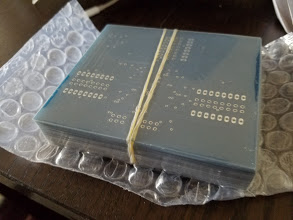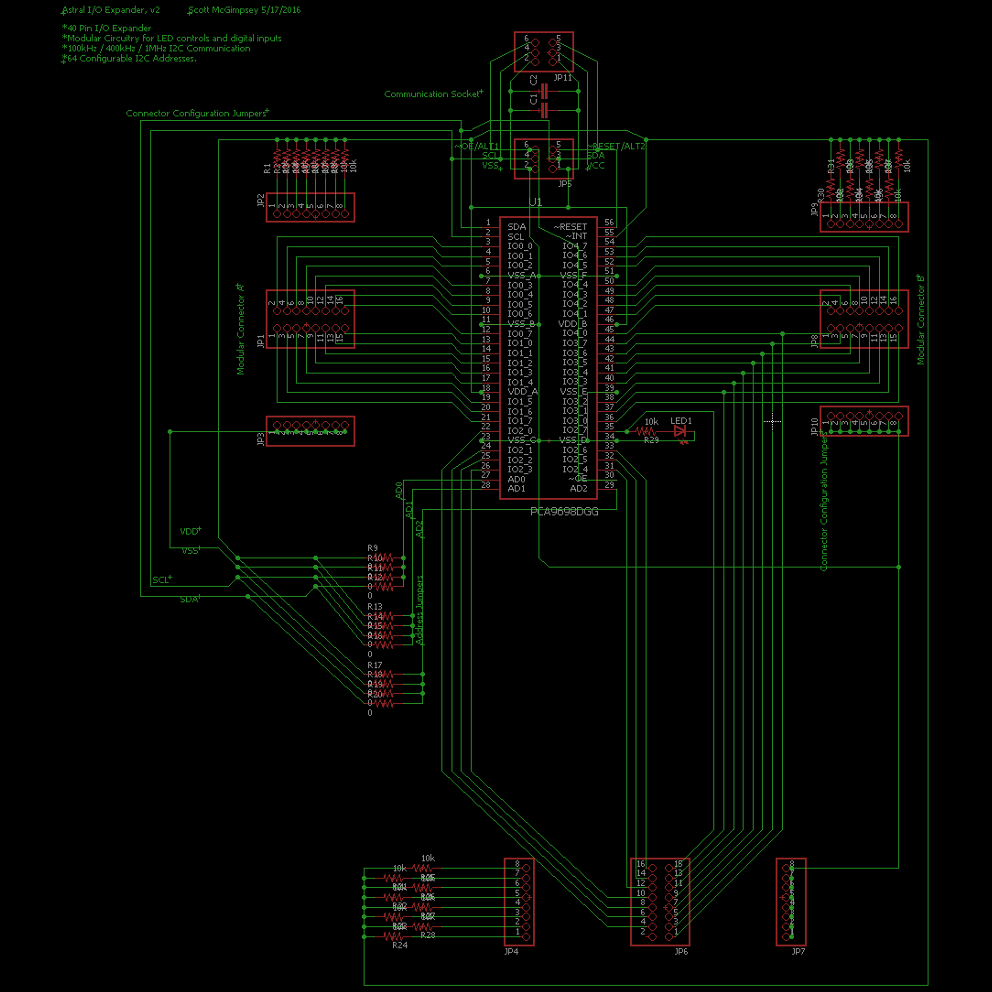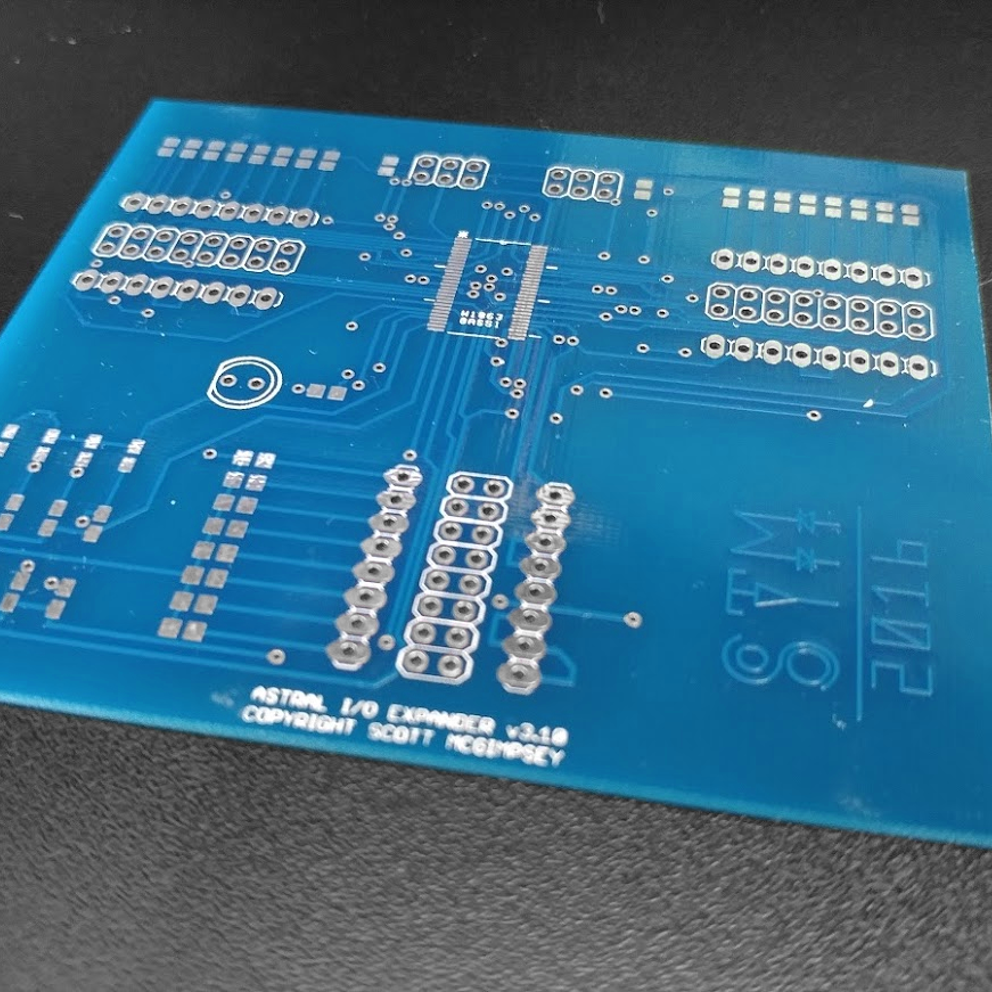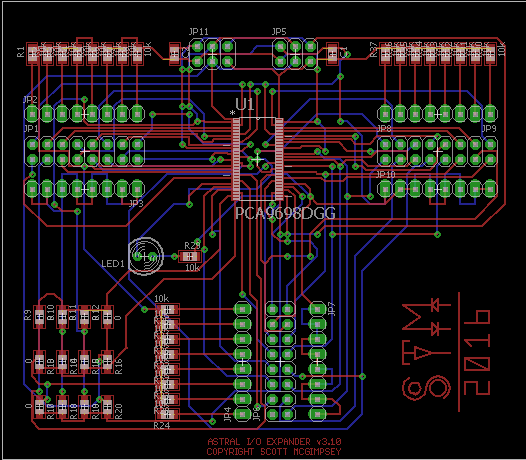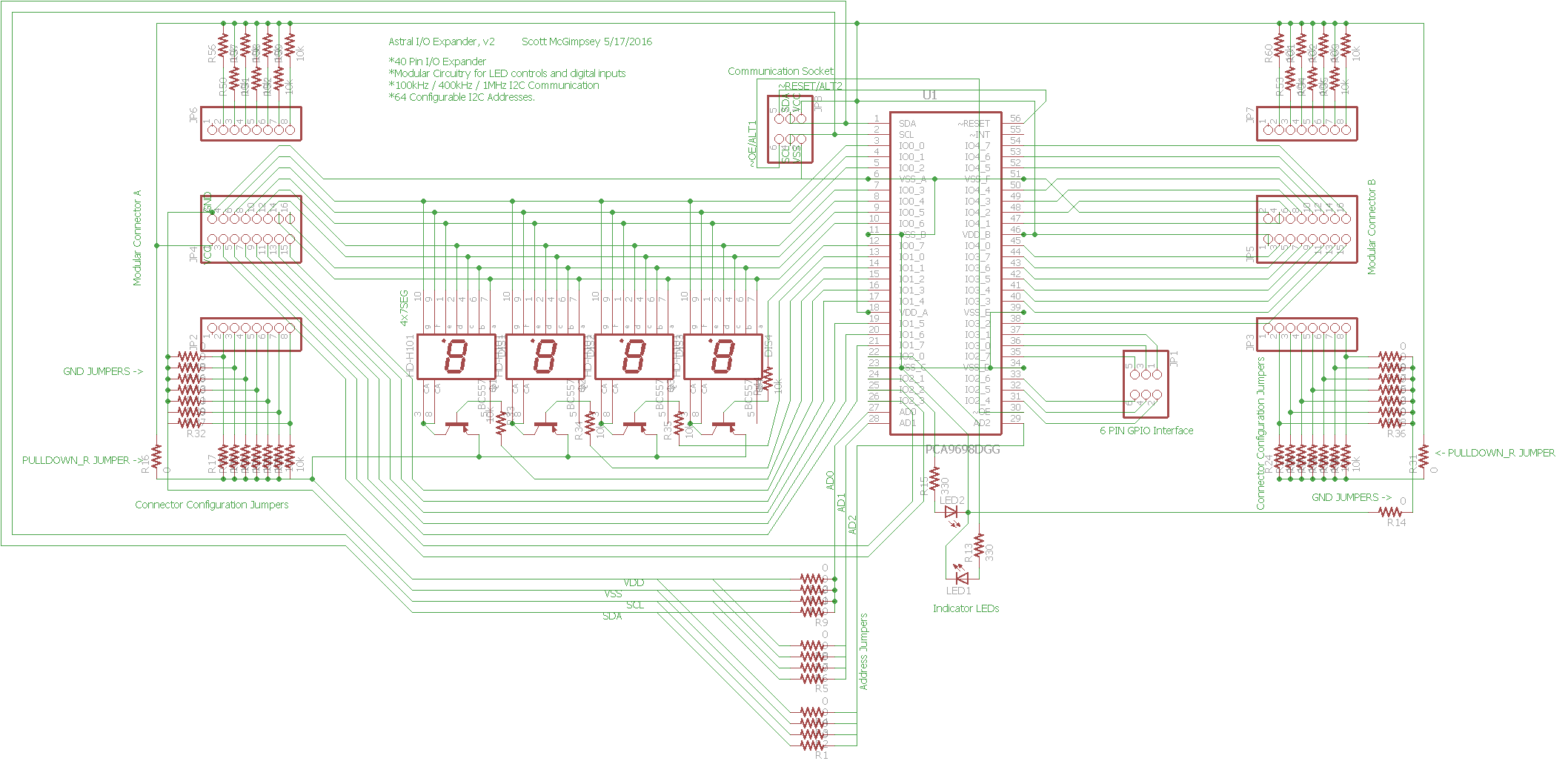I/O Expander
For those times when you need to read 2,560 buttons, but have only four pins.
Scott McGimpsey Designs
Project Details
Have you ever needed to control loads of switches, buttons, LEDs, or sensors, but had a minuscule microcontroller to do it with? Maybe it's worth grabbing a GPIO expander chip and going to town!I/O Expander
NXP based I/O Expander -- Costs 4 GPIO pins, gives 40 GPIO pins. Per board. Up to 64 boards. Bam.
My client owns an escape room, and was looking into creating a new type of live interactive game. Some of the game elements required literally hundreds of inputs to function as desired, while others required dozens of outputs for delivering information, either as signals, lights, or other effects. The other limitation would be that a single computer would drive all operations through connections to an unspecified microcontroller. To accomodate this, I designed a small board centered around the NXP PCA9698 GPIO Expander. On the one hand, it was prepped and ready to be hooked up to a 4 wire bus. Until the capacitance across the communication wires grew too large, or you filled all 64 addresses, you were free to scale anywhere from 40 to 2,560 Inputs or Outputs. With that level of control, interrupts, and state management, this was a solution which would get my client where they needed to be. All in all, not too shabby.
- Date : 07/30/2017
- Client : Puzzalarium
- Skills :EDA, PCB
- Location : San Diego, CA

Client Review.
Client review not yet available.
I used Autodesk Eagle to do the circuit design and component footprint development. When the layout functionality failed to create the circuit at the size/layer limitations presented by the PCB manufacturer. I tried KONEKT ELECTRA Adaptive Shape-Based PCB Autorouting instead, which was able to get the design within all requirements.


